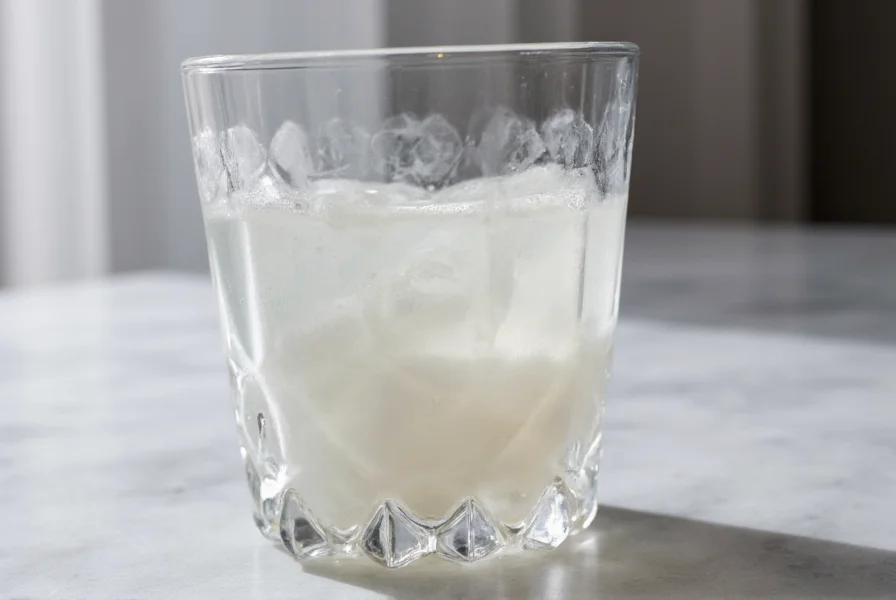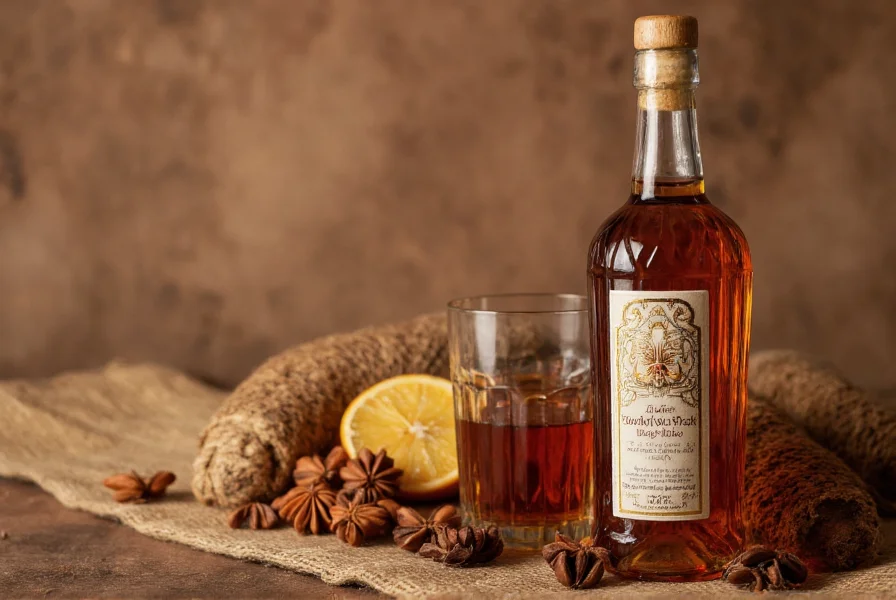Anise flavored liqueurs represent one of the world's oldest distilled spirit categories, with historical roots stretching back to ancient medicinal preparations. These distinctive spirits share a common characteristic: the pronounced licorice-like flavor derived from anethole, the essential oil found in aniseed and star anise. When properly crafted, these liqueurs offer complex flavor profiles that go beyond simple sweetness, featuring herbal, floral, and sometimes spicy notes that have made them cultural staples across numerous regions.
The Science Behind the Signature Flavor
The distinctive taste and visual phenomenon of anise liqueurs stem from anethole, a compound that's soluble in alcohol but not in water. This explains the "ouzo effect"—when water is added to these spirits, they turn cloudy as the anethole molecules cluster together. Understanding this chemical reaction is essential for proper consumption, as many traditional preparations intentionally use this effect to enhance flavor release and create the optimal drinking experience.
Professional distillers carefully control the anethole concentration, typically ranging from 1.5-3.5 grams per liter, to achieve the desired flavor intensity without overwhelming bitterness. The quality of the base spirit and additional botanicals also significantly impacts the final product's complexity and smoothness.

Major Types of Anise-Flavored Liqueurs Compared
| Liqueur Type | Primary Region | Alcohol Content | Key Characteristics | Traditional Serving Method |
|---|---|---|---|---|
| Absinthe | France/Switzerland | 45-74% ABV | Complex herbal profile with wormwood, green color (verte) | Drip method with cold water and sugar cube |
| Ouzo | Greece | 37.5-50% ABV | Clean anise flavor, often with subtle herbal notes | Served with cold water, becoming cloudy |
| Pastis | France | 40-45% ABV | Sweeter than absinthe, often with licorice root | 5 parts water to 1 part pastis |
| Sambuca | Italy | 38-42% ABV | Sweet, often with elderflower notes, sometimes with coffee beans | Straight or with water (liscio) |
| Arak | Levant region | 40-63% ABV | Distilled from grapes with anise, often double-distilled | Mixed with water (1:2 ratio), served cold |
Historical Journey of Anise Spirits
The history of anise flavored liqueur stretches back to ancient Egypt, where aniseed was used in medicinal preparations. Monastic distillers in medieval Europe refined these techniques, creating early versions of what would become modern anise liqueurs. By the 18th century, commercial production began in France and Italy, with absinthe gaining particular popularity among artists and writers in 19th century Paris.
The early 20th century saw absinthe banned in many countries due to unfounded health concerns, though traditional anise liqueurs like ouzo and arak continued their cultural significance in Mediterranean and Middle Eastern regions. Recent decades have witnessed a renaissance of artisanal production, with modern distillers respecting traditional methods while innovating with new botanical combinations.
Traditional Production Methods
Authentic anise flavored liqueur production follows time-honored techniques that significantly impact flavor development. Most begin with a neutral grain or grape spirit, to which crushed aniseed (Pimpinella anisum) or star anise (Illicium verum) is added, along with other regional botanicals. The mixture undergoes maceration followed by distillation in copper pot stills.
The precise timing of distillation is critical—distillers must capture the optimal fraction of the distillate to achieve the right balance of anethole and other flavor compounds. Some varieties like Greek ouzo undergo a second distillation with additional botanicals, while Middle Eastern arak is traditionally double-distilled with the anise added only during the second distillation. Quality producers avoid artificial coloring and excessive sugar, preserving the spirit's natural characteristics.
Proper Serving Techniques Across Cultures
Understanding how to drink anise liqueur properly transforms the experience from merely tasting to participating in centuries-old traditions. In Greece, ouzo is typically served chilled or with a small amount of cold water, causing the characteristic louche (clouding) that releases aromatic compounds. The traditional Greek ratio is one part ouzo to two parts water, served with meze (small dishes) like olives, feta cheese, or grilled octopus.
French pastis preparation follows a ritualistic approach: pouring a small measure into a glass, placing a sugar cube on a special slotted spoon, then slowly dripping cold water over the sugar to dissolve it while watching the liquid turn from clear to opaque. Absinthe service involves the iconic absinthe fountain, with water dripping slowly over a sugar cube to achieve the proper dilution (typically 3-5 parts water to 1 part absinthe).

Modern Applications and Cocktail Innovation
While traditional serving methods remain popular, contemporary mixologists have rediscovered anise flavored liqueurs for cocktail innovation. These spirits work exceptionally well in cocktails that balance their distinctive flavor with complementary ingredients. The classic Sazerac, featuring absinthe-rinsed glassware, demonstrates how a small amount can transform a cocktail's aromatic profile.
For those exploring anise liqueur cocktail recipes, consider these approaches:
- Use as a rinse for glassware to add subtle complexity without overwhelming the drink
- Combine with citrus juices to balance the sweetness and enhance herbal notes
- Create modern twists on classic cocktails like the Last Word or Aviation
- Experiment with small amounts (1/4 to 1/2 oz) in spirit-forward cocktails
When crafting cocktails with anise liqueur, remember that less is often more—the goal is to complement rather than dominate the flavor profile. High-quality artisanal productions typically integrate more smoothly into cocktail recipes than mass-market alternatives with artificial flavors.
Common Misconceptions Clarified
Several myths persist about anise flavored liqueurs that deserve clarification. The most persistent concerns absinthe's supposed psychoactive properties, which modern research has thoroughly debunked. While historical absinthe contained wormwood (Artemisia absinthium), the thujone levels were never high enough to cause hallucinations—this was largely propaganda from wine producers during absinthe's ban period.
Another common confusion involves the difference between ouzo and absinthe. While both feature anise flavor, they're distinct products: absinthe contains wormwood and other herbs, giving it a more complex botanical profile, while ouzo focuses primarily on anise with fewer additional botanicals. Similarly, pastis differs from absinthe in being sweeter and lacking wormwood, despite their visual similarity when diluted.
Frequently Asked Questions
What causes the cloudiness when water is added to anise liqueur?
The cloudiness, known as the "ouzo effect," occurs because anethole (the essential oil in anise) is soluble in alcohol but not in water. When water dilutes the spirit, the anethole molecules cluster together, scattering light and creating the milky appearance. This phenomenon actually enhances flavor release and is integral to the traditional drinking experience.
How should I store anise flavored liqueur?
Store anise liqueurs in their original bottles with tight-fitting caps in a cool, dark place. Unlike wine, they don't improve with age but remain stable for several years when properly stored. Once opened, consume within 1-2 years for optimal flavor, as the volatile aromatic compounds gradually dissipate. Avoid temperature fluctuations that can accelerate flavor degradation.
Can I make cocktails with anise liqueur if I don't like strong licorice flavor?
Yes, many cocktails use anise liqueur sparingly to add complexity without overwhelming licorice flavor. Try using just 1/4 to 1/2 ounce in spirit-forward cocktails, or use it as a glass rinse. Citrus juices, particularly grapefruit or lemon, balance anise flavors beautifully. The Sazerac demonstrates how a small amount can transform a cocktail's aromatic profile without dominating the taste.
What's the difference between aniseed and star anise in liqueur production?
Aniseed (Pimpinella anisum) comes from a flowering plant in the celery family and delivers a sweeter, more delicate licorice flavor. Star anise (Illicium verum) is a spice from a Chinese evergreen tree with a stronger, more intense flavor and slight camphor notes. Traditional Mediterranean liqueurs typically use aniseed, while some Asian-inspired productions incorporate star anise, which contains higher concentrations of anethole.
Are there non-alcoholic alternatives to anise flavored liqueur?
Yes, several companies now produce non-alcoholic anise-flavored spirits designed specifically as cocktail substitutes. You can also create a simple alternative by simmering 2 cups of water with 2-3 star anise pods and 1 teaspoon of fennel seeds for 10 minutes, then cooling and storing in the refrigerator. While not identical to distilled liqueurs, these alternatives capture the essential flavor profile for mocktails.











 浙公网安备
33010002000092号
浙公网安备
33010002000092号 浙B2-20120091-4
浙B2-20120091-4